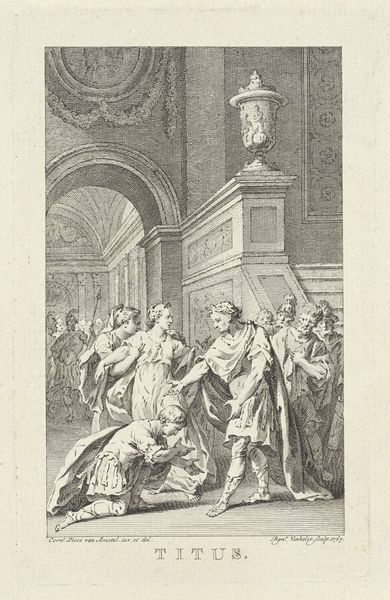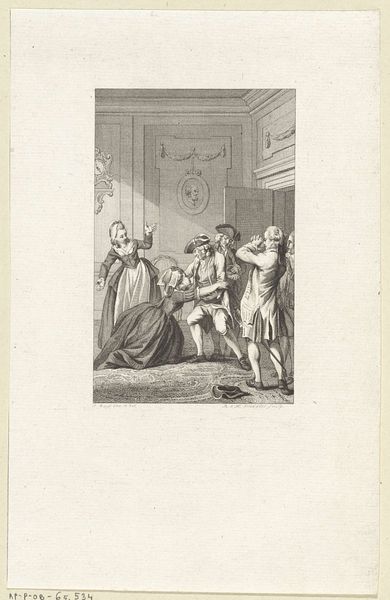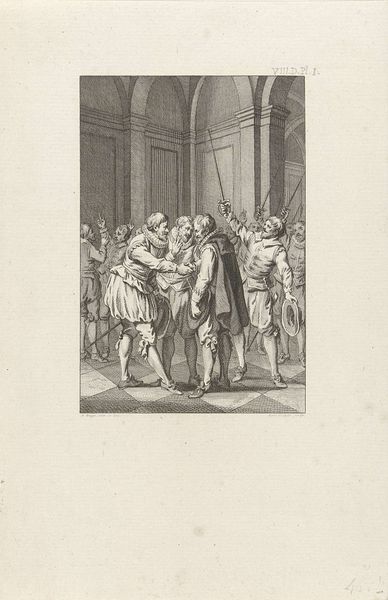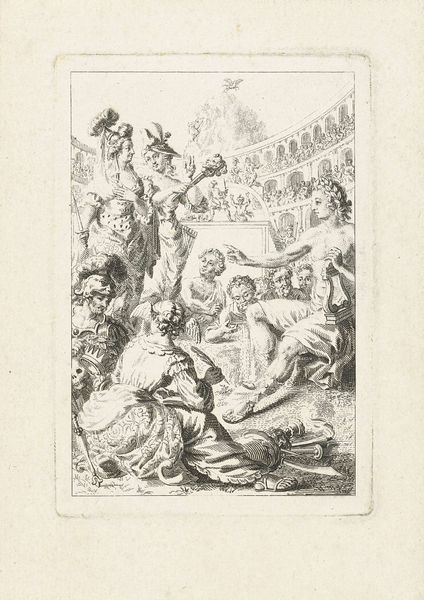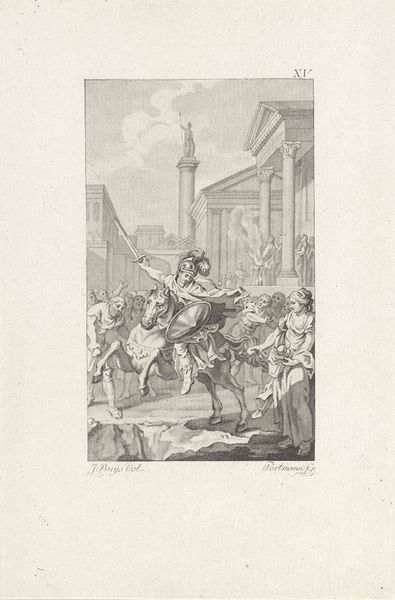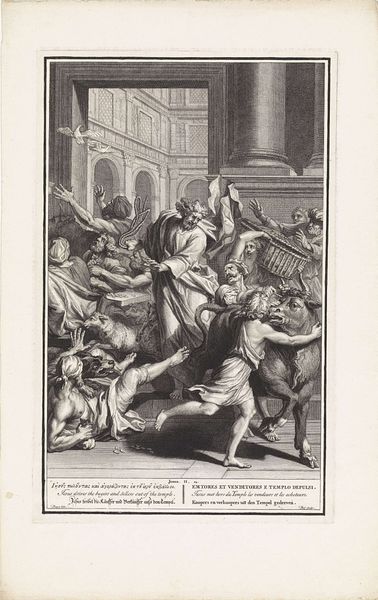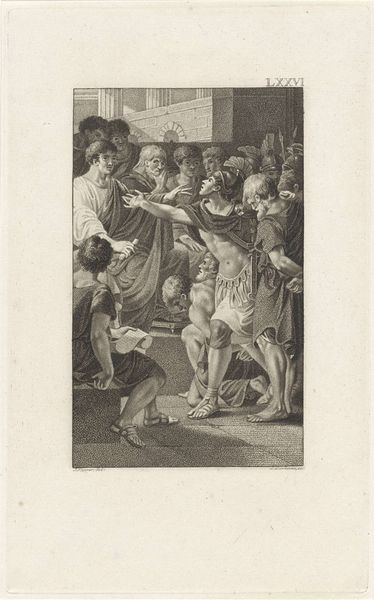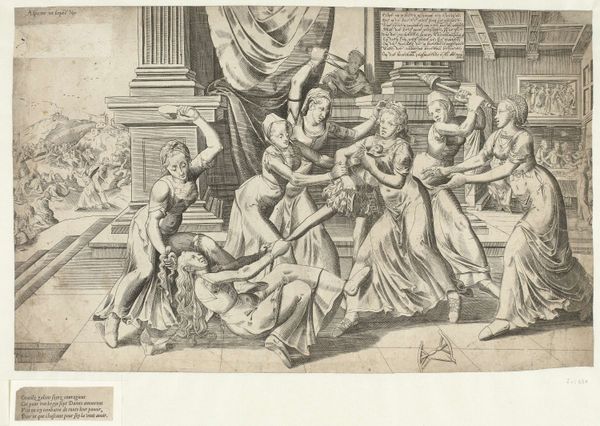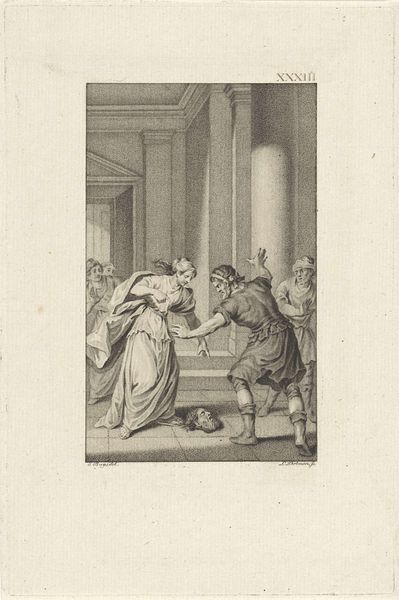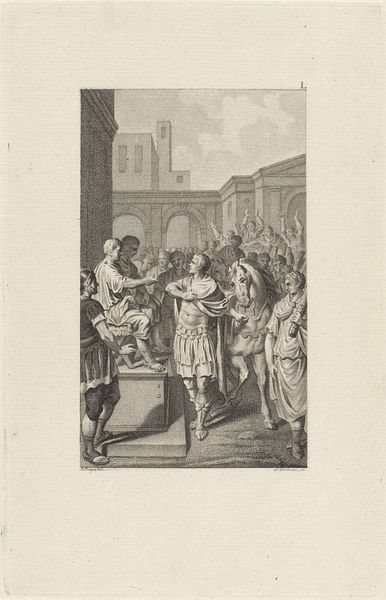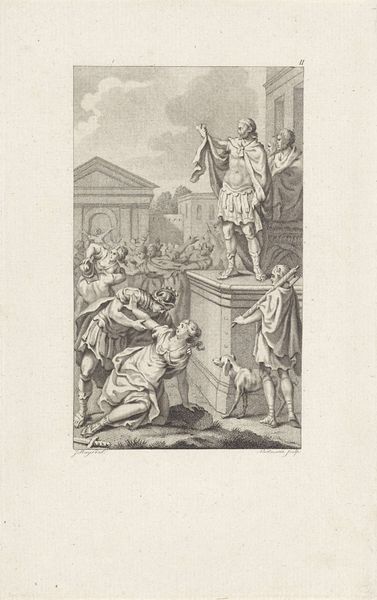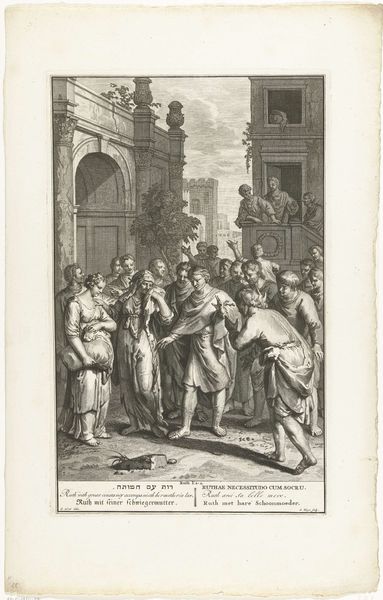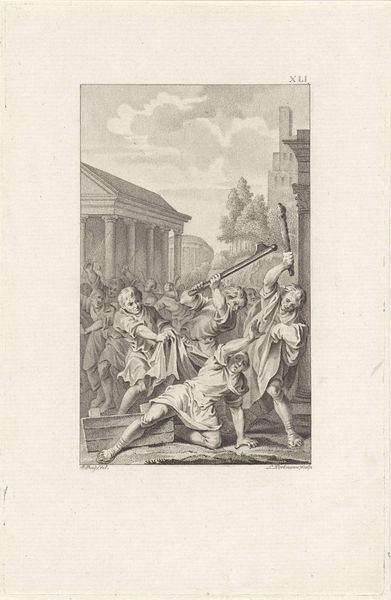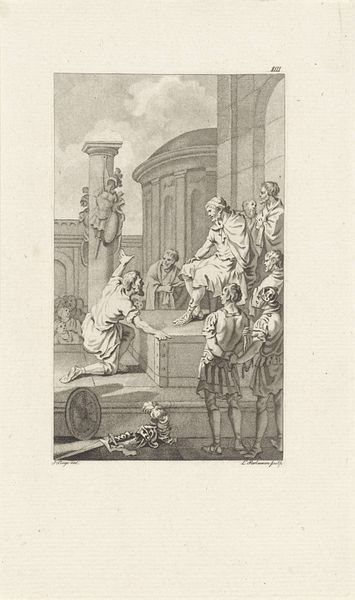
print, engraving
#
neoclacissism
#
narrative-art
# print
#
figuration
#
history-painting
#
academic-art
#
engraving
Dimensions: height 212 mm, width 132 mm
Copyright: Rijks Museum: Open Domain
Curator: This engraving from 1793 by Ludwig Gottlieb Portman, titled "Virginius doodt zijn dochter Virginia," depicts a dramatic scene from Roman history, rendered in meticulous detail. The print itself is held here in the Rijksmuseum. Editor: It’s immediately striking – the stark contrasts achieved through the engraving process heighten the tension. There's a theatrical quality to the composition that grabs you. Curator: Absolutely. Portman worked within the Neoclassical movement, which valued clean lines and rational subjects. Note how the medium, the print, is here being used to disseminate stories of civic virtue and sacrifice during the rise of revolutionary political cultures. Editor: Indeed, the academic precision is evident in the anatomical accuracy of the figures, as well as in the considered positioning of each element within the frame. Consider the lines of the buildings behind the drama versus the implied chaotic emotional state of the individuals that comprise the artwork. Curator: Portman, working in this format, engaged in a longer tradition of using reproductive prints to democratize access to important cultural narratives. How effective were these types of visual devices, engravings, at molding public sentiment and distributing interpretations of history? It begs to be asked when we engage in our own current practices. Editor: Looking at the formal elements, it’s interesting how the central figure of Virginius, with his raised arm and gleaming blade, forms a vertical axis, dividing the composition and adding a strong sense of impending action. The use of line emphasizes a moment of brutal resolution. Curator: And in terms of the history painting context of its era, it echoes the broader debates about morality and power that gripped European society. To view it through such a lens invites reflection on our modern socio-political engagements and struggles as they relate to power structures. Editor: Reflecting on this work now, I appreciate how it manages to combine a narrative of intense emotion with such classical order. It is a real testament to Portman's formal mastery and insight, creating this incredibly potent experience for any viewer, no matter what period in time they may be viewing it in. Curator: Seeing how a simple print carries these multiple layers – historical, social, technical – really highlights the richness in even seemingly straightforward artworks. It certainly emphasizes for me the interconnectedness of art, production, and society.
Comments
No comments
Be the first to comment and join the conversation on the ultimate creative platform.
